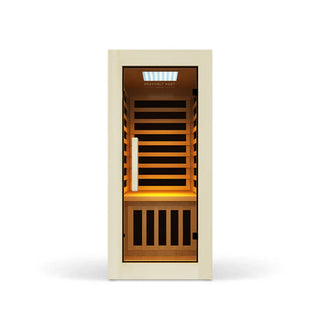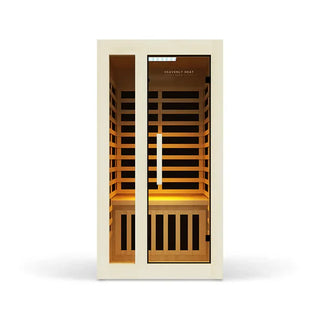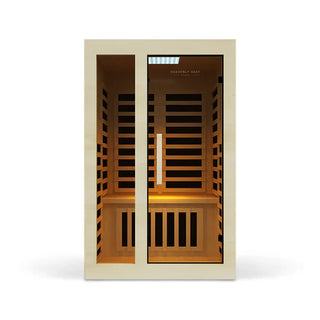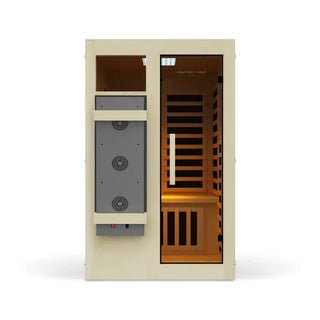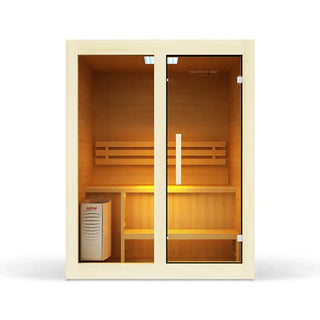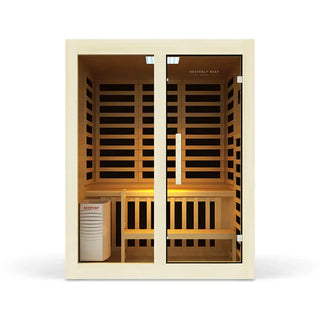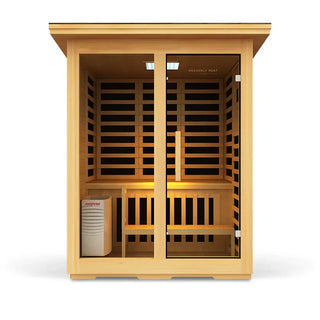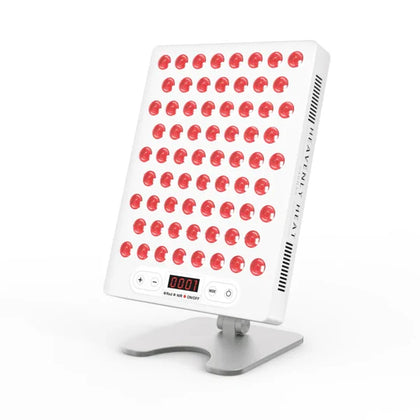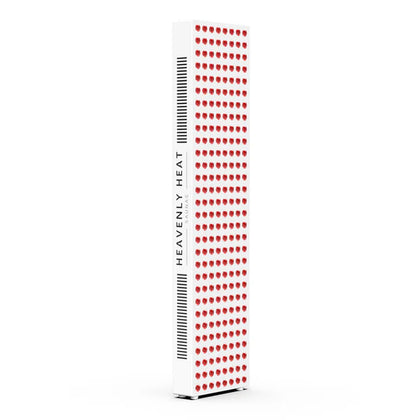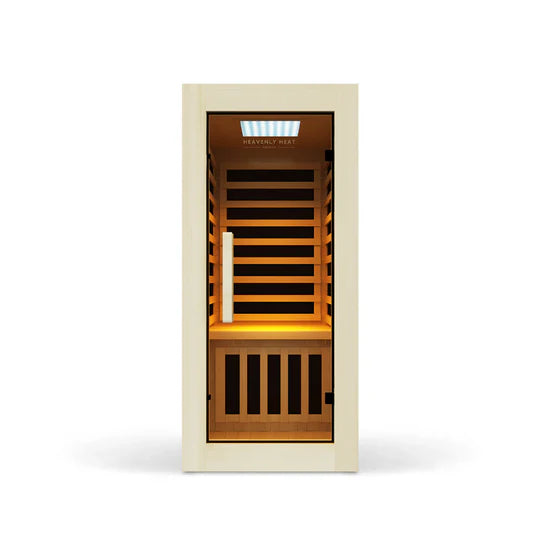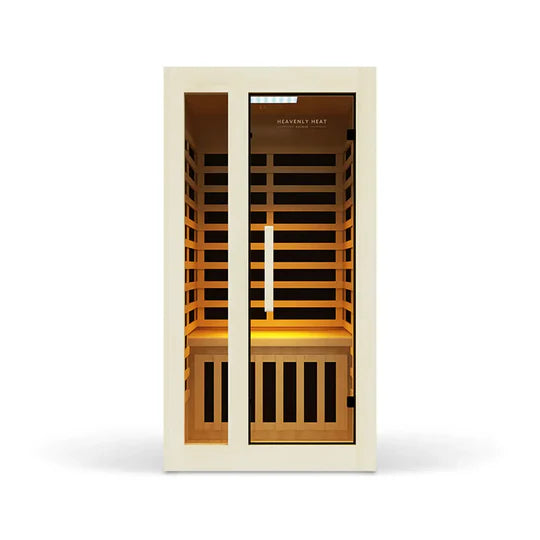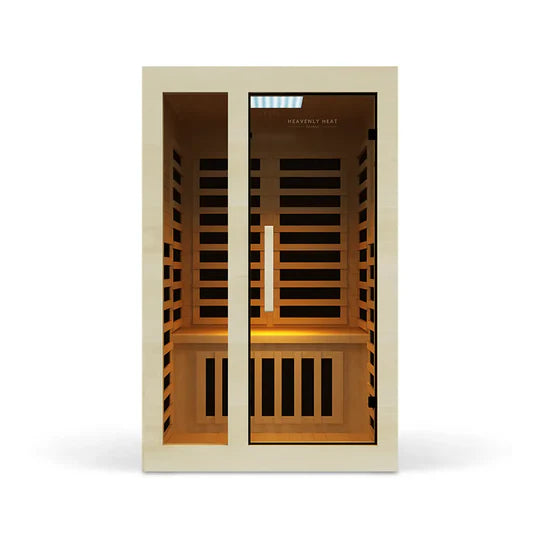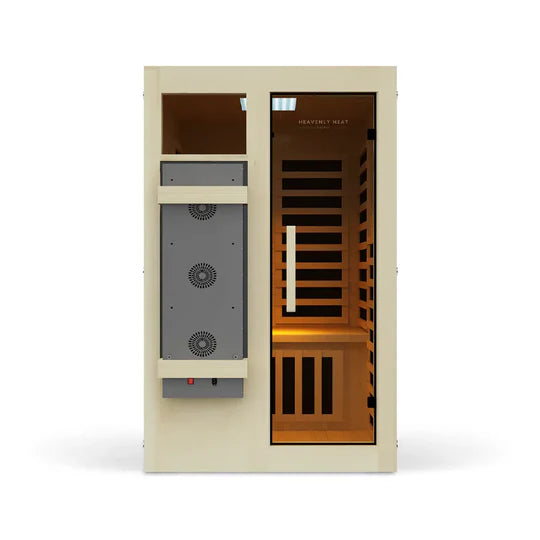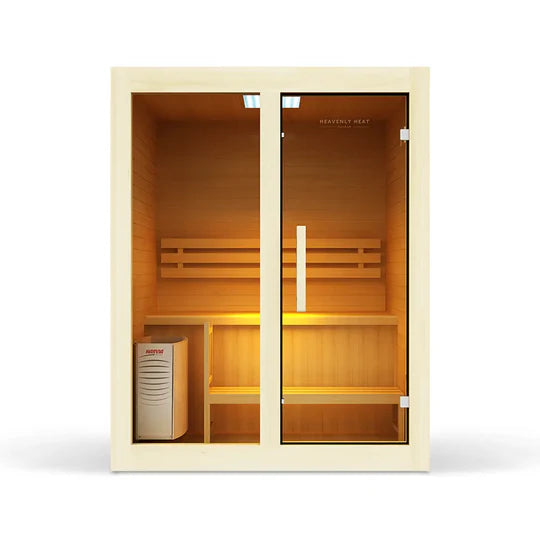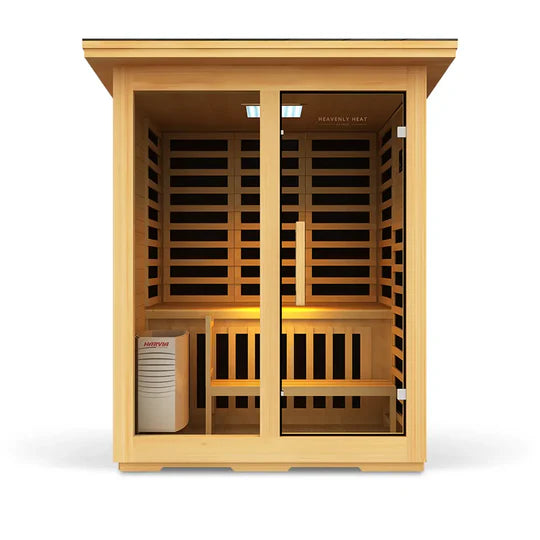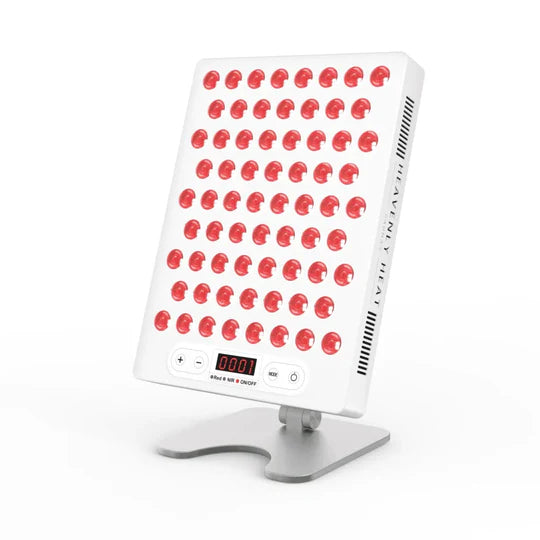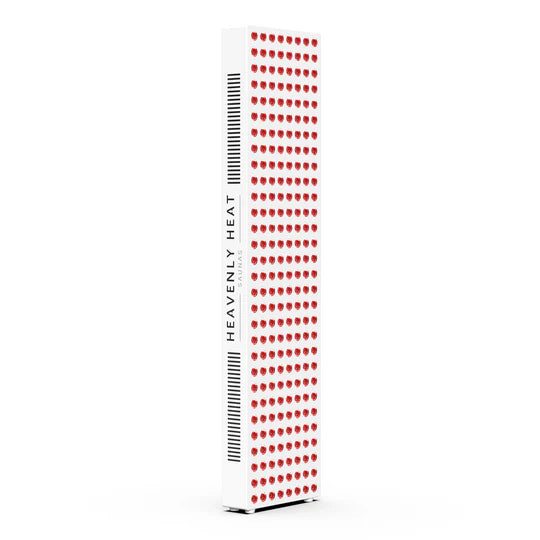Where Can You Put a Sauna in Your House?

Choosing the right spot for your sauna can make all the difference in how comfortable and functional it is.
The perfect location ensures better heat circulation, saves energy, and improves your overall sauna experience.
Whether you’re planning to install it indoors or outdoors, understanding the best placement will help you get the most out of your sauna.
Table of contents
Key Takeaways
Consider Functionality: Proper placement boosts sauna efficiency and lowers energy costs.
Prioritize Ventilation: Good airflow prevents moisture buildup and protects your sauna.
Ensure Accessibility: Place your sauna near a bathroom or gym for daily convenience.
Be Mindful of Space: Ensure your chosen spot has enough room for the sauna and maintenance.
Respect Privacy: Choose a quiet, private location for an optimal sauna experience.
Why Does Sauna Placement Matters in Your Home?
- Putting the sauna in the right spot helps it heat better: Where you place your sauna has a big effect on how well it works. A smart location helps the heat move around properly, making the sauna heat up faster and more evenly. This also saves you money on energy.
- Good air flow keeps your sauna and home in good shape: Ventilation matters a lot. If air can move in and out easily, moisture won’t get trapped. This keeps the sauna dry and helps avoid problems like mold, rot, or damage to your walls and ceiling.
- Avoid placing the sauna in tight or damp areas: If your sauna is in a small space with low ceilings or poor air flow, it won’t heat properly. It might also feel uncomfortable and wear out faster. That’s why cramped or humid places are not ideal.
- A sauna close to the bathroom or gym is easier to use: You’re more likely to enjoy your sauna every day if it’s near your shower, changing area, or workout space. Easy access makes it part of your routine instead of a hassle.
- A quiet and private spot makes the sauna feel like a retreat: When your sauna is placed in a peaceful area of the home, it becomes a calming space. Privacy adds to relaxation and helps you fully enjoy the experience.
- A well-placed sauna can make your home more valuable: Buyers notice smart design choices. A sauna that’s placed in the right area, and looks like it belongs there, can make your home more attractive and increase its value.
Where Can You Put a Sauna in Your House?
Bathroom
- Bathroom Can Be a Good Place for a Sauna: If your bathroom has enough space, it can be a great spot for a sauna because it already handles steam and moisture from daily use.
- Small Infrared Saunas Fit Well in Bathrooms: Infrared saunas are best for bathrooms because they don’t need much space and are simple to install without major changes.
- Good Airflow Helps Avoid Mold and Dampness: Bathrooms get steamy, so having proper ventilation in place is important to stop mold and keep your sauna safe and fresh.
- Safe Wiring and Materials Make a Big Difference: Because bathrooms have moisture, it's important to use the right materials and hire a professional to handle the electrical work safely.
- Hard Floors Work Better Than Soft Ones: Carpet is a bad idea in a sauna bathroom. Go for tile, vinyl, concrete, or similar surfaces that can take heat and moisture.
- Even a Small Bathroom Can Handle a Sauna: You don’t need a huge bathroom, just choose a sauna that’s designed to save space and still give you the relaxing benefits.

Basement
- A basement gives you the quiet and space a sauna needs: Basements are often away from the busy parts of the house, making them peaceful and roomy, just right for setting up a private sauna.
- Basement air needs to stay fresh to avoid dampness: Since basements can trap moisture, good ventilation is important to stop mold and humidity from building up in your sauna space.
- Infrared saunas fit better in most basement setups: Infrared saunas don’t need as much room or ventilation as traditional ones, which makes them a smarter and easier choice for basements.
- Make sure your basement ceiling isn’t too low: Before setting up a sauna, check that your basement ceiling is at least 7 feet high so everything fits safely and comfortably.
Attic
- Making the Most of Your Attic Space: Transforming your attic into a sauna is a great way to use unused space effectively.
- Ensuring Enough Ceiling Height for Comfort: For a comfortable sauna experience, the attic should have a ceiling height of at least 6–7 feet.
- Infrared Saunas Are Ideal for Attics: Infrared saunas are more suitable for attics due to their smaller size and lower power requirements.
- Ventilation Is Crucial for Safety: Proper ventilation in the attic will prevent heat buildup and protect the space from moisture damage.
- Reinforce the Attic Floor for Safety: Ensure the attic floor can support the sauna’s weight by reinforcing it if needed.
Garage
- A garage gives you enough space for a sauna: If your garage isn’t cramped, it’s a solid spot to install a sauna without losing space inside your home.
- Your garage sauna stays away from living areas: Having the sauna in the garage means it won’t affect the comfort or style of your main indoor rooms.
- Garages can be too cold or too hot for a sauna: Because most garages aren’t insulated, keeping a steady sauna temperature all year round can be tough.
- A wood-burning sauna in the garage needs extra safety: Using a wood-fired sauna here means you’ll need proper ventilation to handle smoke, moisture, and heat safely.
- You can still park your car and have a sauna: It’s possible to divide the garage so one side holds the sauna and the other still fits your vehicle.

Home Gym
- Adding a sauna makes your home gym more useful: Putting a sauna in your home gym helps you recover faster after workouts and gives your space more purpose.
- A small gym needs a sauna that fits well: If your gym room is small, an infrared sauna works best because it doesn’t take up much space and heats up fast.
- Keeping the sauna close saves time and effort: Placing the sauna near your workout area makes it easier to use without walking far, adding comfort to your fitness routine.
- Good air and moisture control keeps things safe: To stay comfortable and avoid problems, the sauna area should have proper airflow and handle heat and moisture well.
Closet or Spare Room
- You can easily fit a sauna into a closet or spare room: Turning a small closet or an extra room into a sauna is possible if you go for a compact design. These smaller models are made to fit in tight home spaces without major construction.
- Infrared saunas work best in smaller rooms: Infrared saunas are ideal for closets or spare rooms because they don’t need much space or ventilation. Their heating elements are hidden, making them safer and more space-efficient.
- Prebuilt saunas are great for quick setup in spare rooms: If you don’t want the hassle of building from scratch, prebuilt saunas are a great choice. They're light, easy to install, and perfect for areas like second floors where heavy structures aren’t ideal.
- Make sure there’s enough space and air to stay comfortable: Even in a small room, there needs to be enough space for both the sauna and good air flow. A tiny closet might not cut it, but a larger spare room can be just right if you plan it well.
- Small rooms need smart planning to avoid discomfort: Limited space can make your sauna feel cramped, so it’s important to plan everything, from layout to model choice, to make sure it feels relaxing and comfortable when you use it.
Outdoor Area
- Outdoor Saunas Provide a Peaceful, Nature-Connected Retreat: Placing a sauna in your backyard can create a peaceful space that connects you with nature. It offers fresh air, privacy, and a serene environment for ultimate relaxation.
- Solid Foundations Keep Your Sauna Secure: You’ll need a solid foundation like concrete or wooden decking to ensure the sauna stays level and secure for long-term use.
- Sealing Protects Your Sauna from Moisture and Fire: Once the foundation is set, sealing it with roofing felt or flame sheeting will protect against moisture and fire risks, ensuring the sauna stays in good condition.
- Cedar is Ideal, but Consider Potential Allergies: Cedar is a popular choice for outdoor saunas because it resists mold and insects. However, some people may be allergic to the natural oils in cedar, so it’s important to consider this before choosing it.
- Ensure Enough Space for Safety Around Your Sauna: Make sure your sauna is placed far enough from other outdoor features, like a hot tub, to ensure safety and comfort for everyone using it.
How Much Space Do You Need for a Home Sauna?
- Minimum Room Size for Small Saunas: When planning to install a sauna at home, space is a key consideration. The minimum room size for a sauna depends on the type, but generally, a 4' x 4' space is enough for a small unit.
- Space for a Comfortable 2-Person Sauna: For a 2-person sauna, you’ll need at least a 5' x 5' area to ensure comfort.
- Traditional Saunas Require More Space: Traditional saunas usually need more space than infrared ones, so always consider the type of sauna you prefer. Infrared saunas are more compact, while traditional saunas require more room for ventilation.
- Optimal Ceiling Height for Heat Flow: To make sure the heat spreads evenly and stays comfortable, keep the ceiling height at 7 feet or less. This helps create the best possible heat flow inside the room.
Where Do Most Homeowners Install Their Sauna?
- Indoor Saunas for Privacy and Convenience: Many homeowners prefer to install their saunas indoors, choosing spaces like basements, home gyms, or bathrooms. These locations provide privacy and convenience, making them ideal for sauna installations.
- Sauna Installation in Smaller Homes: Even in smaller homes, it’s possible to find space for a sauna. Installing one in a bathroom corner or setting aside a small area in a home gym can still provide a relaxing and functional sauna experience.
- Outdoor Saunas for a Tranquil Retreat: For those with a larger backyard or patio, installing a sauna outdoors offers a peaceful, nature-filled retreat. This option combines the benefits of sauna use with the tranquility of being outside.
- Ensuring Proper Setup for Saunas: No matter where you choose to install your sauna, it’s essential to ensure the space can manage the heat, humidity, and electrical requirements. Proper setup guarantees a safe and enjoyable sauna experience.
Can You Share a Sauna Space With Another Function (e.g., gym or bathroom)?
- Sauna Can Enhance Your Gym Experience: Integrating a sauna into a gym space can enhance your fitness routine. You can place it in a corner or an unused area, ensuring it’s close enough for easy access without overcrowding the gym.
- Sauna Fits Well with a Home Spa: If you're considering combining a sauna with a home spa, this works perfectly, as both promote relaxation and wellness.
- Planning is Key for a Sauna in Small Bathrooms: A sauna can also fit into a small bathroom, but careful planning is key. You may need to choose a compact model and ensure proper ventilation.
- Proper Ventilation Ensures Comfort and Dryness: Proper ventilation throughout the space will keep everything comfortable and dry, ensuring a smooth, enjoyable experience.
Top Mistakes to Avoid When Choosing a Sauna Location
Not Considering Access to Power, Water, or Proper Ventilation
- Power Access Is Essential for Heating: Choosing the right sauna location depends on having reliable access to power. Most larger saunas require a 220–240 Volt circuit with a dedicated 30 to 60-Amp breaker to prevent overloads. Smaller saunas might need only a standard 110–120 Volt setup. Ensure the sauna is placed near an electrical outlet to avoid installation challenges.
- Ventilation Keeps the Air Comfortable: Good ventilation is necessary to regulate humidity and ensure proper air circulation. This helps maintain a comfortable and safe sauna experience. Without ventilation, the sauna may become stuffy, impacting the overall comfort.
Installing Sauna Where Drainage Issues Could Cause Long-Term Damage
- Water Pooling Can Cause Serious Damage to Your Sauna: Proper drainage is a must when installing a sauna. Without it, water can pool around the sauna, causing structural damage and potentially impacting electrical components.
- Poor Drainage Leads to Mold and Mildew Growth: A location with poor drainage can lead to mold or mildew growth, which can weaken the sauna’s materials over time.
Placing Sauna in Areas Lacking Privacy or Prone to Loud Noise
Privacy and noise play significant roles in your sauna experience. Installing a sauna in a noisy area can ruin the peaceful retreat you’re hoping for.
It’s also important to think about privacy, if your sauna is too exposed, you might not feel comfortable using it. A quiet, private space will make your sauna time more enjoyable.
Ignoring the Floor’s Ability to Support the Sauna’s Full Weight
- Most floors aren’t built to carry the weight: of a sauna: Before installing a sauna, consider your floor’s strength. Saunas are heavy, and many homes have floors that may not be able to support the weight.
- Wooden floors can crack under pressure if you're not careful: If you have a wooden floor, check its weight capacity , the maximum load your floor can safely support, including equipment and structural materials.
- Reinforcing the floor now can save you from big trouble later: You may need to reinforce the floor to avoid future problems.
- Putting a sauna upstairs without checking the structure can be a big stake: A second-floor installation can be tricky, as the floor may not be designed to handle such weight.
Positioning Sauna in Direct Sunlight or Harsh Weather Exposure
Sunlight can be damaging to your sauna’s exterior over time. Constant exposure to UV rays and heat can wear down materials and lead to fading or cracking.
Direct sunlight could cause it to overheat, reducing its effectiveness. If you live in a region with harsh weather conditions, avoid placing your sauna in exposed areas. Choose a location that shields it from the elements.
Failing to Leave Enough Space for Access, Safety, and Maintenance
- Ensure Enough Clearance Around the Sauna: Make sure there’s enough clearance around your sauna to allow for easy access and to avoid safety hazards, particularly around heaters and electrical components.
- Design a Safe Sauna Door: Opt for a door that opens outward, uses shatterproof glass, and has a cool-touch handle. These features improve safety and usability, especially when space is tight.
- Ensure Space for Easy Maintenance: A cramped space makes it harder to clean and repair your sauna. Proper spacing allows for necessary maintenance and helps prevent issues like mold or mildew.
- Leave Room Around Heaters and Electrical Parts: Ensure there is sufficient space around heaters and electrical components. Tight spaces can make it hard to maintain airflow and pose risks to the sauna’s safety and functionality.
Overlooking Local Building Codes, Permits, or Zoning Regulations
Before installing a sauna, you need to check your local building codes and zoning regulations.
Many areas require a permit , especially for outdoor saunas . Failing to get the proper permits could result in fines or complications down the road. Zoning laws may restrict where you can place a sauna, particularly for outdoor installations .

FAQs
Can You Convert a Walk-In Closet Into a Sauna?
Converting a walk-in closet into a sauna can be a great way to save space and enjoy the benefits of a sauna at home. Make sure the closet has enough space for the sauna and adequate ventilation. Choose heat-resistant materials like cedar or pine for the walls and floors. Check local building codes to ensure everything meets safety standards.
Should You Choose an Indoor or Outdoor Sauna?
Indoor saunas are usually more energy-efficient because they’re in a controlled environment, while outdoor saunas can be affected by the weather. Indoor saunas tend to be more common as they’re easier to install in existing homes. Outdoor saunas offer more space, privacy, and a peaceful natural setting, but they perform best in mild climates.
Is It Safe to Put a Sauna in the Laundry Room or Utility Room?
Installing a sauna in your laundry or utility room can be tempting, but it’s important to consider potential issues. The humidity could damage your appliances if there’s inadequate ventilation. Without proper airflow, moisture can cause mold growth, which is harmful to your home and health. Ensure the sauna is safely installed with enough ventilation to manage humidity.
Can a Sauna Fit in a Condo or Townhouse?
Fitting a sauna into a condo or townhouse is possible, even in smaller spaces. Infrared saunas, which use light to heat the body directly, are specifically designed to fit into tight areas. Ensure proper ventilation and enough electrical power. You can also use portable saunas if space is very limited.


